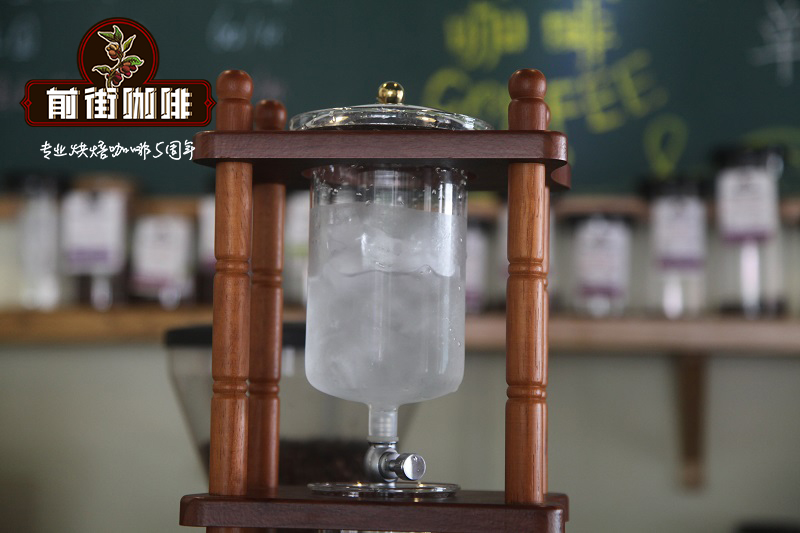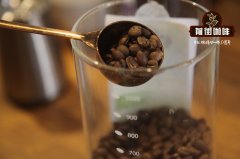What do you recommend for boutique coffee at Santa Rita Manor in El Salvador-growing coffee beans in El Salvador

Professional coffee knowledge exchange more coffee bean information please follow the coffee workshop (Wechat official account cafe_style)
El Salvador, the smallest and most densely populated country in Central America, has been growing coffee since 1740. 8% of the country grows coffee under shade (Shade Grown), which has the advantages of uniform ripening, increased honey mucus content, high weight, increased chances for the formation of sweet polyphenols, and full formation of the main ingredients of coffee beans. For coffee trees with too much sunshine, the edges of the leaves will be rolled up, causing water loss, which is not conducive to photosynthesis, reduce carbon dioxide absorption, and reduce sugar. Coffee fruits are harvested only once a year, mostly from November to February of the following year. More than 60% of the varieties are bourbon strains. In particular, El Salvador is the most important country for growing Pacas and Pacamara. In addition, the Salvadoran coffee grading system is basically divided into three grades according to the altitude of planting: lowland C.S. (500murm 900m), highland H.G. (900m Mel 1200m), extremely highland S.H.G. (1200m Mel -).
□ Santa Rita Manor is named "Santa Rita" in honor of Italian nuns of the same name. Located in the Ilamatepec volcanic area, the fertile volcanic mud provides the Santa Rita Farm with ideal soil for growing coffee, all coffee trees have shade, and these shade trees become habitats for local animals. Coffee is harvested 100% by hand and only fully ripe coffee similar to red cherries is picked.
Salvadoran coffee is a mature harvest season from November to February every year. New beans are sold in the coffee market from June to August. For example, most of the Salvadoran coffee finals of the International Coffee Cup Test (C.O.E) are selected in mid-late July. Most of the coffee comes from small and medium-sized farms, and Salvadoran coffee farms work closely with international coffee organizations. The main hope is to increase the personal income of farmers and further improve the quality of life at home and community, so that coffee farmers have an incentive to change the way of planting to restore the original natural ecology, and the quality of coffee can gradually improve step by step. it makes consumers willing to accept the coffee produced in El Salvador to combine consumption patterns with natural ecology, which is the most perfect agricultural production and marketing behavior.
Santa Rita Farm in the southwest is a model winning farm for producing good coffee in El Salvador. The owner is a farmer who is very brave in trying all kinds of changes, such as the sun beans launched in 2009, which caused a sensation, and then screened out PB beans from 60 million pounds of coffee produced on the farm in December of the same year. He got a high score of 91 on the American professional coffee cup testing site, and constantly updated several kinds of coffee. There is no shortage of interesting coffee beans such as orange bourbon, red bourbon and yellow bourbon in the park. I think we will drink honey-treated coffee produced by the farm next season. This is a farm worthy of long-term attention.
Santa Rita Manor, which belongs to the JASAL Group, is located in the Apaneca Ilamatepec mountain region of Juayua province in the west of El Salvador. The local geological environment is sandy soil and volcanic soil, with a warm and humid climate with an average annual temperature of 15 degrees Celsius and an average rainfall of more than 2000 millimeters, with the dedication and professionalism of the manor operators, producing one of the best quality coffee in El Salvador. From planting, pruning, picking to follow-up treatment, JASAL has invested a lot of resources in all aspects of agricultural production to ensure that each batch of coffee they produce is fully traceable and has high-quality cup performance.
Many residents of Santa Rita have devoted themselves to the production of coffee, and their enthusiasm is even shown in coffee sacks through design and hand-painting, which can be said to be unique from the initial planting production to the final output packaging before export.
END
Important Notice :
前街咖啡 FrontStreet Coffee has moved to new addredd:
FrontStreet Coffee Address: 315,Donghua East Road,GuangZhou
Tel:020 38364473
- Prev

El Salvador San Piero Manor Coffee hand Punch parameters suggestion _ San Piero / Glory Mountain Manor introduction
Professional coffee knowledge exchange more coffee bean information please follow Coffee Workshop (Wechat official account cafe_style) Salvadoran Coffee Manor:-San Piero / Glory Mountain Manor Finca Loma La Gloria (FLLG) is a coffee farm in El Salvador, their Wka bean raw * on the hillside of the El Boqueron volcano looks down from the volcano _ can be rolled to Oueszal in II, England
- Next

Coffee brewing characteristics of El Salvador Black Beauty Manor Story how El Salvador coffee beans taste good
Professional coffee knowledge exchange more coffee bean information please follow the coffee workshop (Wechat official account cafe_style) Buenas Vista Estate country: El Salvador varieties: Pacamara, Bourbon, Kaddura treatment: tanning area: black uninhabited manor grade: SHB [default roasting degree] City (end of explosion) recommended water temperature: 88-92 ℃ [cup test reference]
Related
- Detailed explanation of Jadeite planting Land in Panamanian Jadeite Manor introduction to the grading system of Jadeite competitive bidding, Red bid, Green bid and Rose Summer
- Story of Coffee planting in Brenka region of Costa Rica Stonehenge Manor anaerobic heavy honey treatment of flavor mouth
- What's on the barrel of Blue Mountain Coffee beans?
- Can American coffee also pull flowers? How to use hot American style to pull out a good-looking pattern?
- Can you make a cold extract with coffee beans? What is the right proportion for cold-extracted coffee formula?
- Indonesian PWN Gold Mandrine Coffee Origin Features Flavor How to Chong? Mandolin coffee is American.
- A brief introduction to the flavor characteristics of Brazilian yellow bourbon coffee beans
- What is the effect of different water quality on the flavor of cold-extracted coffee? What kind of water is best for brewing coffee?
- Why do you think of Rose Summer whenever you mention Panamanian coffee?
- Introduction to the characteristics of authentic blue mountain coffee bean producing areas? What is the CIB Coffee Authority in Jamaica?

